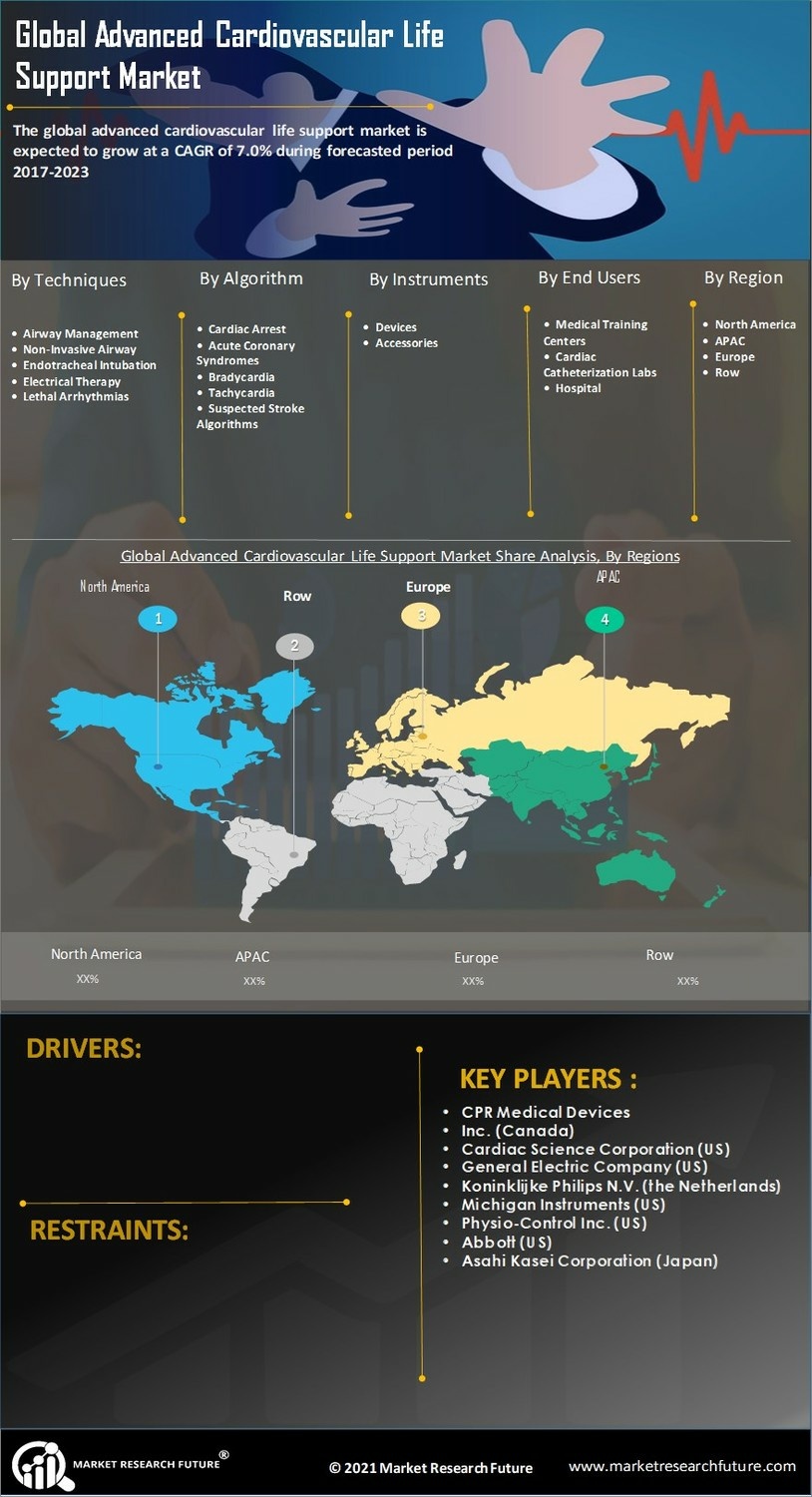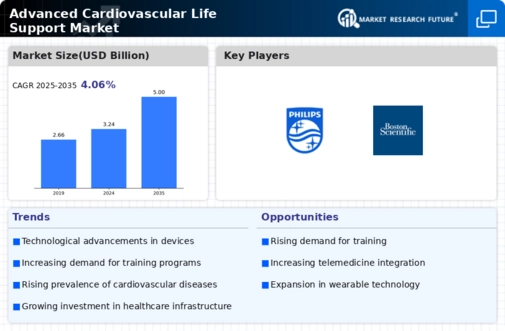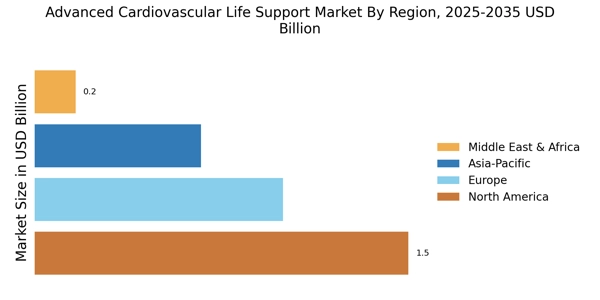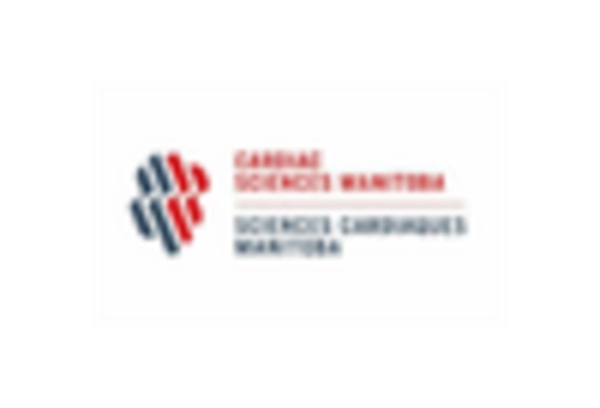Government Initiatives and Funding
Government initiatives and funding play a crucial role in shaping the Advanced Cardiovascular Life Support Market. Many governments are recognizing the importance of improving emergency medical services and are allocating resources to enhance cardiovascular care. This includes funding for advanced life support training programs, procurement of state-of-the-art medical equipment, and public awareness campaigns about cardiovascular health. For instance, several countries have launched national programs aimed at increasing the availability of AEDs in public spaces. Such initiatives not only improve access to life-saving technologies but also stimulate market growth by encouraging healthcare providers to adopt advanced cardiovascular life support solutions.
Rising Incidence of Cardiovascular Diseases
The Advanced Cardiovascular Life Support Market is being driven by the rising incidence of cardiovascular diseases worldwide. Factors such as sedentary lifestyles, unhealthy diets, and increasing stress levels contribute to the prevalence of conditions like heart attacks and strokes. According to the World Health Organization, cardiovascular diseases are the leading cause of death globally, accounting for approximately 31% of all fatalities. This alarming trend necessitates the availability of advanced life support systems to manage cardiac emergencies effectively. Consequently, healthcare facilities are increasingly investing in advanced cardiovascular life support technologies, which is expected to bolster the market's growth in the coming years.
Technological Advancements in Medical Equipment
The Advanced Cardiovascular Life Support Market is experiencing a surge in technological advancements, particularly in medical equipment. Innovations such as automated external defibrillators (AEDs) and advanced monitoring systems are becoming increasingly prevalent. These technologies enhance the efficiency and effectiveness of emergency response teams, thereby improving patient outcomes. The integration of artificial intelligence and machine learning into these devices is also noteworthy, as it allows for real-time data analysis and decision-making support. According to recent data, the market for advanced medical devices is projected to grow at a compound annual growth rate (CAGR) of approximately 7.5% over the next five years, indicating a robust demand for cutting-edge solutions in the Advanced Cardiovascular Life Support Market.
Enhanced Training Programs for Healthcare Professionals
The Advanced Cardiovascular Life Support Market is significantly influenced by the enhancement of training programs for healthcare professionals. Comprehensive training initiatives, including simulation-based learning and hands-on workshops, are being implemented to ensure that medical personnel are well-equipped to handle cardiac emergencies. These programs not only improve the skills of healthcare providers but also increase the overall survival rates of patients experiencing cardiac arrest. Recent statistics suggest that hospitals with rigorous training protocols report up to a 30% higher success rate in resuscitation efforts. As a result, the demand for advanced training resources is likely to continue to rise, further propelling the growth of the Advanced Cardiovascular Life Support Market.
Growing Awareness of Cardiopulmonary Resuscitation (CPR)
The growing awareness of cardiopulmonary resuscitation (CPR) is significantly impacting the Advanced Cardiovascular Life Support Market. Public education campaigns and community training sessions are increasingly emphasizing the importance of CPR in saving lives during cardiac emergencies. As more individuals become trained in CPR techniques, the demand for advanced life support systems is likely to rise, as these systems complement the initial response provided by bystanders. Recent surveys indicate that communities with higher CPR training rates experience improved survival outcomes in cardiac arrest cases. This heightened awareness is expected to drive further investment in advanced cardiovascular life support technologies, thereby fostering market expansion.


















Leave a Comment